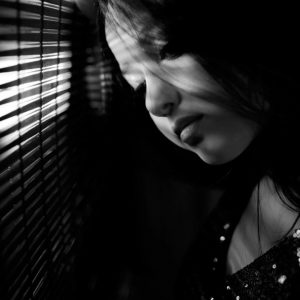
I like Fall and cozy overcast afternoons with my homemade soup simmering while a fire burns in the fireplace. But I bah-humbug my way through the holidays and rejoice on January 2nd. Clearly, I don’t suffer what many of you do once we turn our clocks back an hour. Seasonal Affective Disorder (SAD) is an actual condition, and my heart goes out to anyone suffering such misery for months at a time. Today’s blog is my effort to recognize your dark mood and other symptoms while shining some light on the topic that may help you
What is SAD?
SAD is a depressive disorder that begins and ends about the same time each year. We think of it beginning in the Fall and lasting until Spring, but for some, it may begin in the Spring and end in the Fall. I had no idea about summer SAD. Either way, this is not just the “blues” or a “funk.” Symptoms may start mild and then build up over time.
Causes
Even now, we don’t know the specific causes, but some factors may include:
- Added to normal decrease of sunlight in the winter, we turn back our clocks to get more sun in the morning, but less in the afternoon. This affects our circadian rhythm as less sunlight disrupts our internal clock. This can lead to depression.
- We know serotonin is our “feel good” hormone. With less sunlight, our serotonin levels drop, and this affects our mood.
- The change in seasons can disrupt our melatonin levels as well. This will interfere with our sleep patterns and mood.
Risk Factors
- Affects women more than men and younger adults more than older adults.
- Can’t forget those genes. Family history with SAD, or other forms of depression, may contribute to SAD.
- Living far from the equator reduces sunlight in the winter and makes for longer days in the summer.
- Vitamin D helps raise serotonin levels, so lack of sunlight on our skin will inhibit serotonin production. May need to take Vitamin D supplements.
Symptoms
General symptoms include:
- Listlessness of feeling sad for most or all of the day
- Decreased interest in activities usually enjoyed
- Low energy
- Sleeping too much
- Craving carbs with weight gain (that’s enough to depress anyone!)
- Difficulty concentrating
- Feeling of hopelessness, worthlessness, or guilt
- Having thoughts of not wanting to live
The most common symptoms of Fall/Winter SAD are oversleeping, change in appetite with carb cravings, tiredness, and decreased energy.
For Spring and Summer SAD, symptoms may differ.
- Insomnia
- Poor appetite
- Weight loss
- Agitation and/or anxiety
- Increased irritability
People suffering from Bipolar Disorder may be more susceptible to SAD. Episodes of mania may be linked to a particular season. The person should see their physician if:
- They feel down for days at a time
- No motivation of enjoyable activities
- Sleep pattern changes
- Appetite changes or increased use of alcohol
- Hopeless or suicidal feelings.
Complications
We shouldn’t downplay SAD. It’s only logical that prolonged negative feelings about self and life in general could lead to social withdrawal, school or work problems, substance abuse, or other mental health issues such as anxiety or eating disorders. With suicidal thoughts on the rise since the pandemic, especially among young people, we cannot ignore suicidal thoughts and behaviors.
Get Help
Don’t suffer needlessly or more than you can handle. Some people benefit from photo therapy, exposing their bodies to more UV light. Psychotherapy may help with anxiety, negative feelings about self and, by all means, get immediate help if you experience thoughts of suicide or self-harming behavior. Medication, if only while the season lasts, may help get you through.
Physicians for Responsible Medicine has an excellent podcast that addresses SAD and depression, “Food and Mood.” https://www.pcrm.org/news/exam-room-podcast/food-and-bad-moods. A study done measuring for depression, anxiety, and stress found meat eaters were more susceptible than vegetarians who had far fewer symptoms.
“Feel good” foods include fruits and vegetables, good carbs (not highly processed or sugary) can increase serotonin levels. Enjoy sweet potatoes, cherries and (YAY!) dark chocolate. How about a nice hot cup of hot chocolate made with almond milk and cacao powder?
A friend of mine loves hot chocolate. I made him a cup with almond milk, cacao powder with a bit of stevia, and he happily drank it all. I told him about the few ingredients in his beverage and then read the list of chemicals that were listed on the side of a commercial brand of hot chocolate packets. He was shocked!
Dark leafy greens are full of folate (from the word “foliage”) and folate is the building block for serotonin. Besides those greens, beans, peas and lentils have folate as well.
Besides Vitamin D, Vitamin B12 is important for nerve health and energy.
Other Resources
Other resources for this blog include:
https://wa-health.kaiserpermanente.org/tips-sad-coping-with-dark-days/
https://www.youtube.com/watch?v=rs7GVXfTXWA
https://nutritionfacts.org/2019/05/02/the-best-source-of-vitamin-d/


Such an impactful essay! I eat a lot of leafy green salads and take Vitamin D supplements, so far, so good!
You must have been doing that all your life. In our 3 years at St. Joe’s I never saw you down in the dumps!